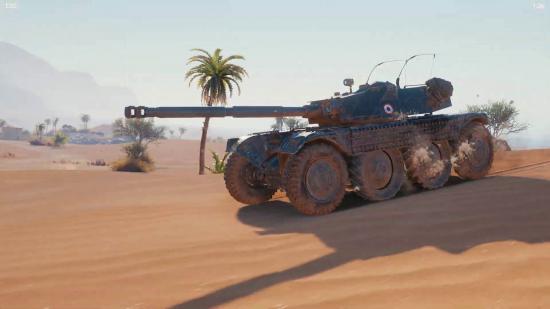October 24, 2019 We’ve run the numbers through the PCGN test bench again and Intel’s top chip has now come out ever-so-slightly on top in World of Tanks’ EnCore RT demo.
World of Tanks’ hardware-agnostic ray tracing solution utilises Intel’s optimised, open-source, Embree library to offload ray tracing computation to your CPU, rather than your graphics card. So we’ve put the top chips from both Intel and AMD into the test rig to see how they fare, and to see how much Intel’s optimisations for its own open-source tech help it along.
While it looked like AMD had a surprising win here at first, we’ve run the numbers again and found the home team’s clock speed advantage seems to have been a boon to Intel’s 8-core Core i9 9900K. Slightly less surprising considering the open-source ray tracing kernel at EnCore RT’s core has been “optimised for the latest Intel processors.”
For all runs the benchmark was set to ultra across the board: graphics, anti-aliasing, and ray tracing (RT). Intel’s i9 9900K manage a self-referential score of 16,889 during the run, while AMD’s Ryzen 9 3900X managed 16,698. A relatively slight advantage for Chipzilla, but an advantage nonetheless – even despite the latter’s four extra cores.
EnCore RT was built to make use of multi-core CPUs during gaming workloads. With games relying on single-threaded performance so heavily, there is some computational power left untapped in many of today’s desktop CPUs.
To understand EnCore RT, you first have to understand the basics of real-time ray tracing – at least that’s what we’re told by the World of Tanks devs. There are, essentially, three stages, and each one can be run across different hardware if necessary. First, you have to prepare the rendered scene to get blasted with rays: that’s BVH, or bounding volume hierarchy. Second, you have to actually blast the scene with rays, recording which boxes of polygons intersect with each other. And lastly, denoising. That’s pretty self-explanatory.
It’s the first stage that EnCore RT replaces a GPU’s compute cores, instead utilising any free cores on your compatible CPU. Luckily, most CPUs under the sun will do, as Intel’s ray tracing kernels, Embree, are totally open-source and free from proprietary shenanigans. They are, however, “optimised” for Intel silicon. Intel also helped the World of Tanks devs implement some of its features, specifically those for figuring out the BVH structure for every frame and offloading that to available CPU cores.
We’re still yet to see any gaming workload truly test all of the cores available within the best gaming CPUs going. In the meantime, if you want to put your 12-core CPU to good use, streaming can be a great use of all that spare silicon.
